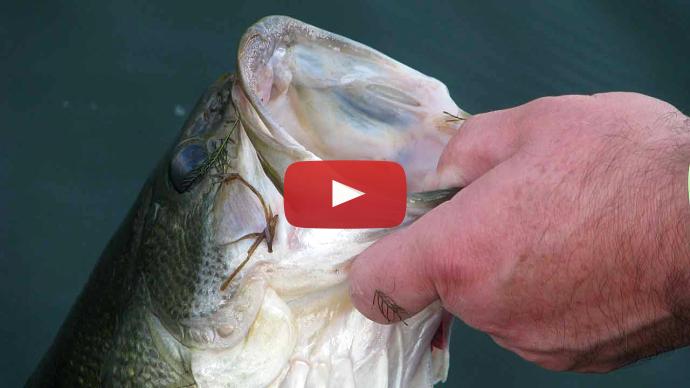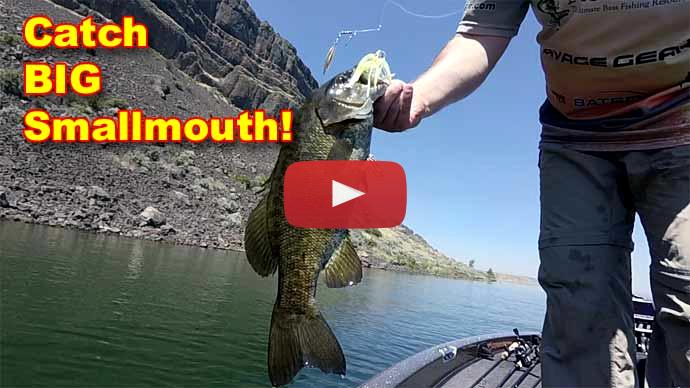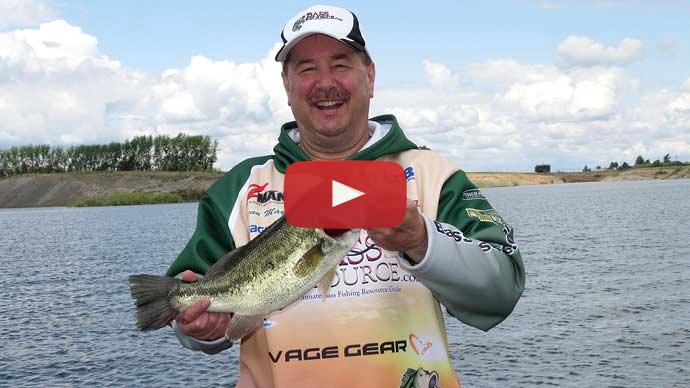Keri: There we go. Better one?
Glenn: Yeah. I bounced it right off a rock. As soon as it hit the rock, bang. Smacked it. As soon as it ricocheted off the rock. Here we go.
All right, here's a question about lake management. If I go to a lake several times and I don't catch any fish, is this an indication of possible lake mismanagement? Well, you know, I'm not gonna say no, because yeah, it's possible the lake isn't managed very well, and there just might not be an abundant amount of fish in it. But typically, if you're struggling to catch fish in the lake, it's usually because of the angler. A lot of us like to blame something else, environmental conditions or lake mismanagement, but the reality is, sometimes the fish are just reluctant to bite or you're fishing in areas where the fish aren't at or perhaps you may be fishing the wrong lure or presentation that aren't appealing to the fish at that time.
Fishing is a real puzzle, it's real difficult sometimes to narrow down what the pattern is that day. It's a matter of trial and error for everybody, myself included and every pro, when they go out on the water, they have an idea of what the fish might be doing that day. But the reality is, you've got to go through a series of trial and error and kind of a countdown method, if you will, to go through the check-downs, go through these different motions to find what the fish are doing that day and fine-tune based upon what you think they're supposed to be doing and find out what they're really doing for you to catch fish.
So, what I like to do, for example, is I'll fish top to bottom, fast to slow, just kind of a matrix in my mind, where I'll fish the top layer water first, then I'll start fishing fast and then I'll start fishing medium speed and then slow. If I'm not getting bit there, I'll move down another layer in the water column, and again, fish fast, medium to slow, move deeper, fast, medium, slow.
At the same time, I'm also looking at different cover available. I'll fish weeds, I'll do that same thing, top to bottom. I'll fish points top to bottom. I'll fish stumpy areas or flats, top to bottom, that type of thing. I dissect it that way and that enables me to hone in on where the fish are that day and to catch more fish.
A good indicator to tell whether or not a lake has been mismanaged is if there's a lot of fish that are the exact same size that are thin, stunted fish. Typically, you catch a lot of dinks, those 10 to 12 inch fish or even smaller. They're all uniform no matter what you do, and they're not very fat. That to me, means you have an overabundant population and not enough forage. That's a lake mismanagement issue.
So I hope I've answered some of your questions. If I didn't get to them, don't worry, I got a bunch of these that I'm gonna go through. As time goes on, I'll be answering your questions, I hopefully get to yours soon enough. And if you happen to have a question for me, please shoot me an email down here at the bottom of this. I've got it listed down here or you can always hit me up on Facebook or on our forums on BassResource.com. For more tips and tricks like this, visit BassResource.com.



